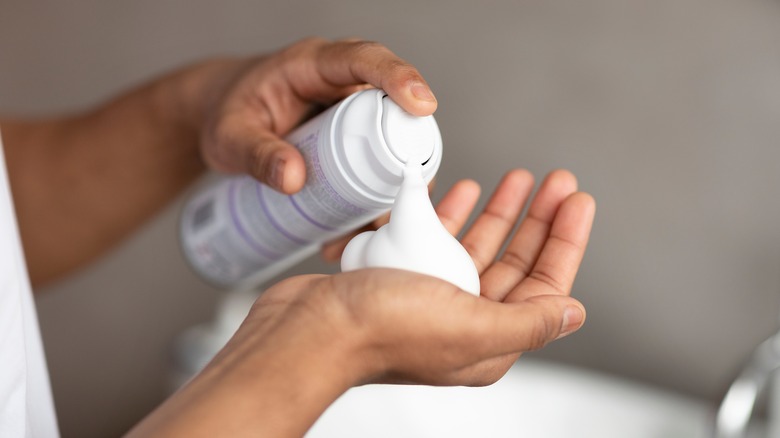Mistakes To Avoid While Shaving Your Underarms
Shaving is a common part of the skincare routine for both men and women. According to Healthline, there aren't any medical benefits of shaving. However, there are many practical and aesthetic reasons for shaving in intimate areas. Some people simply feel better and more attractive with a completely hair-free body. For others, shaving is born out of the habit of keeping those areas clean.
Nowadays, there's a large selection of aids and care products to use according to your preferences. This includes electric razors and wet razor blades. Numerous shaving methods also exist to achieve smooth underarms. However, knowing what you're doing when using such tools and methods is important. Improper shaving leads to razor burns that cause irritated, itchy skin and red bumps, per Healthline. To prevent such skin-related issues, try to avoid some common shaving mistakes. After all, the aim of shaving is to remove the hairs and not ruin the whole skin.
Common shaving mistakes to avoid
Dry shaving is a common and understandable mistake made by many. It might be the only option when you're in a hurry to leave the house. However, dry shaving has its disadvantages — the main issue being that it increases the risk of irritation and cuts. Even if you're pressed for time, it would be best to wet your underarms with water beforehand, and if possible, try to use a little shaving cream. To further protect the skin from irritation after shaving, rinse the shaved area with cold water. This closes the pores and prevents razor burns.
Not moisturizing your underarms after a shave is another no-no. Even if they already feel soft and supple, the skin is more sensitive after shaving. Although the underarm area is usually hidden, sunscreen lotion is still a must to prevent sun damage. Cleveland Clinic also advises waiting at least 24 hours before exposing freshly shaved skin to the sun's rays (via Cleveland Clinic).
Important shaving tips to take note of
Shaving tips and techniques for the underarms are numerous and can get overwhelming, but they exist for your own protection. One very important tip is to change blades regularly. Sometimes, using a dull old razor might be tempting, but this can be risky. Old blades often have a lot of bacteria and dead skin on them, which, when applied to an open cut, can cause skin infection (via Cleveland Clinic). Even if it gets a little more expensive, you should try to replace a blade regularly, especially when it's clogged with dirt.
According to WebMD, following the direction of growth when shaving can also prevent skin irritations. After each stroke, Healthline further recommends rinsing the razor thoroughly to remove dirt and hair buildup. Lastly, always keep the shaver dry between uses. It should be stored in a dry place to prevent bacterial infections. So, using the shower sink for storage is a big no.



